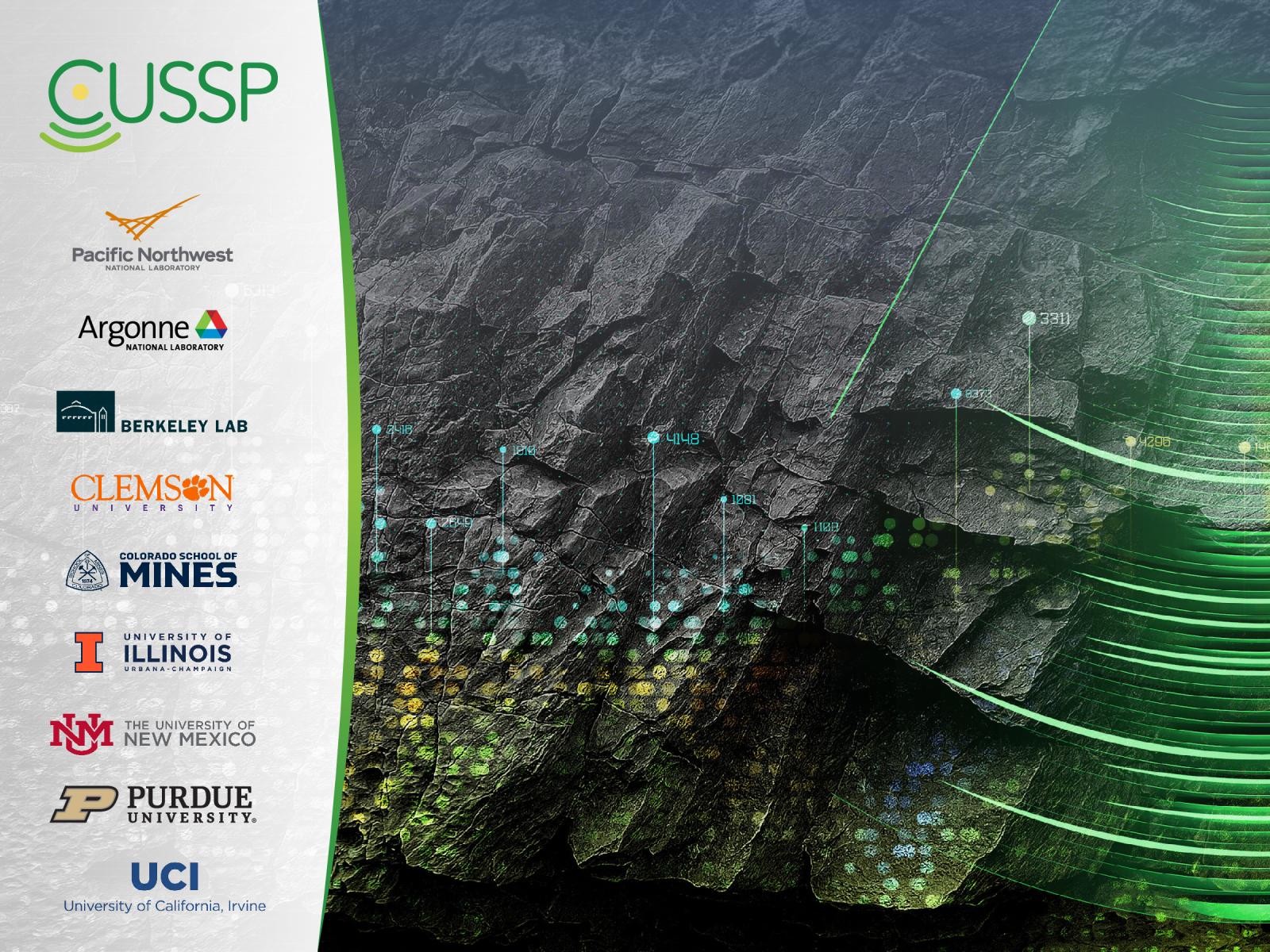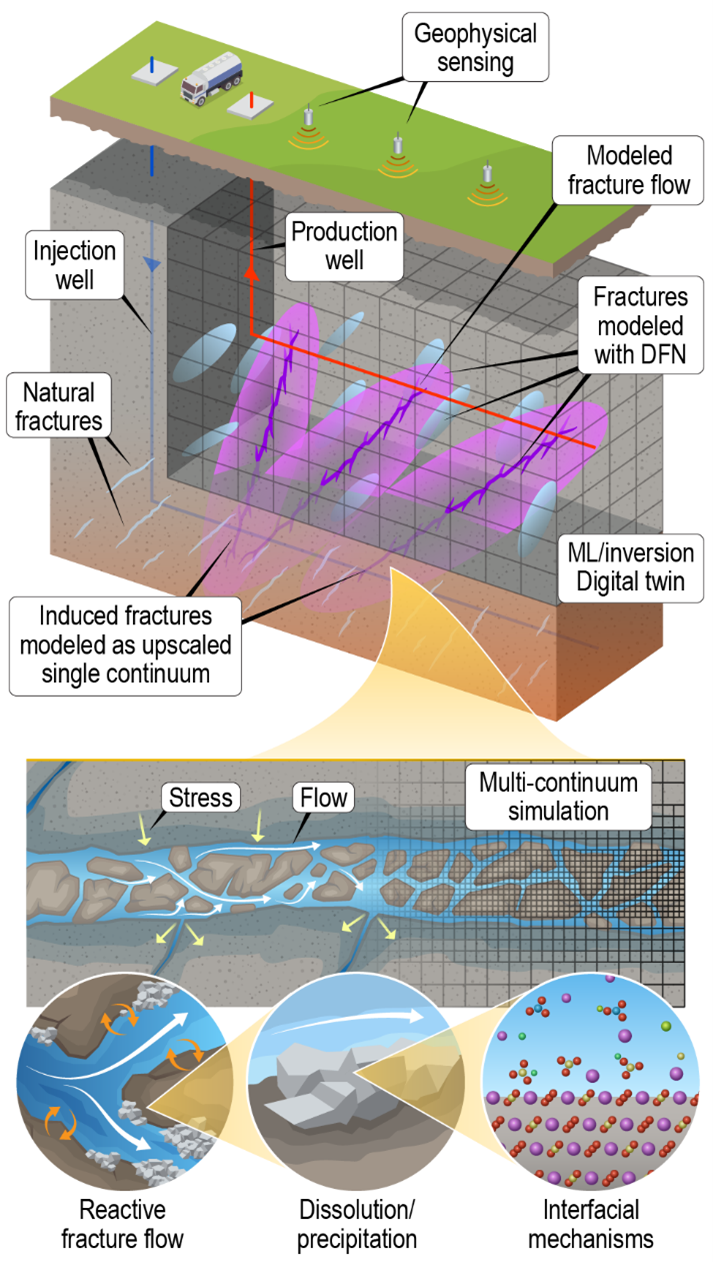Center for Understanding Subsurface Signals and Permeability
The Center for Understanding Subsurface Signals and Permeability (CUSSP) is an Energy Earthshot Research Center with a multidisciplinary team that is working to develop the ability to predict and control fluid flow through fracture networks in enhanced geothermal systems, which is essential knowledge for meeting the Department of Energy’s Enhanced Geothermal Shot goals.

Related Research Facilities
Advanced Light Source (Lawrence Berkeley National Laboratory)Advanced Photon Source (Argonne National Laboratory)Energy Sciences Center (Pacific Northwest National Laboratory)Environmental Molecular Sciences Laboratory (EMSL, a DOE user facility at PNNL)National Energy Research Scientific Computing Center (Lawrence Berkeley Nationa…National Synchrotron Light Source II (Brookhaven National Laboratory)Sanford Underground Research Facility
